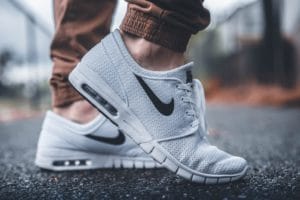 Slow Down the Wear & Tear
Slow Down the Wear & Tear
On BOTH your body AND your running shoes
Similar to food, running shoes have a shelf life, whether we wear them or not. Shoe materials deteriorate over time, both with mileage and when they sit in your closet slowly breaking down. As a humorous thought, maybe running shoes should have an expiration date stamp on the material to prevent using ‘expired’ shoes.
Rotating Your Shoes
Research has shown that rotating your shoes has been proven to prevent injuries.
By rotating from model to model, you are allowing your strike pattern, middle stance and toe off, to change just enough to allow your body not to overstress the same muscles and joints. When running in the same model over and over, your feet get used to the same feel. Rotating through different pairs of shoes can allow the 200 different ligaments in the foot to be stretched and be engaged in different patterns of use.
A recent sports-science medical study actually showed that runners who rotated through 2 or more different pairs of shoes throughout the duration of the 22-week study had a “39% lower risk of running injury than those who almost always ran in the same shoes”. (www.runnersworld.com/newswire/study-backs-rotating-shoes-to-lower-injury-risk)
Recovery
Much like the body needs time to recover and respond after long or difficult runs, your shoes do as well! The outsole of a shoe is made of high-density foam, which compresses after long periods of stress and pounding. It actually takes about 24 hours for the foam of a running shoe to fully decompress after either running or walking in them. By allowing them to decompress fully, you allow the shoes to provide the cushioning and support that you originally had out of the box.
My advice is to get more than one pair of well fitted running shoes and rotate through them. You will find that your stability improves and you have less frequent injuries.
Dr. Bruce Harris
Reference: www.runnersworld.com/newswire/study-backs-rotating-shoes-to-lower-injury-risk
Exercises You Can Do at Home after a Visit to the Chiropractic Clinic
Stay active at home with exercises from ‘Exercises You Can Do at Home after a Visit to the Chiropractic Clinic’.
Read MoreAthletic Therapy: A Vital Component in Sports Rehabilitation
Discover the importance of athletic therapy in sports rehabilitation in our insightful blog on ‘Athletic Therapy: A Vital Component in Sports Rehabilitation’.
Read MoreA Comprehensive Guide to Spinal Therapy for Athletes
Discover the benefits of spinal therapy for athletes in our comprehensive guide ‘A Comprehensive Guide to Spinal Therapy for Athletes’.
Read MoreHow Chiropractic Techniques are Advancing in Pain and Injury Treatment
Discover the latest advancements in pain and injury treatment through innovative chiropractic techniques.
Read MoreSpine Rehabilitation: How Corrective Exercises Can Help with Posture and Pain Relief
Discover how corrective exercises in spine rehabilitation relieve pain and improve posture – read more now!
Read MoreCorrective Exercises: Your Secret Weapon Against Chronic Pain
Combat chronic pain with corrective exercises featured in ‘Corrective Exercises: Your Secret Weapon Against Chronic Pain’.
Read More





